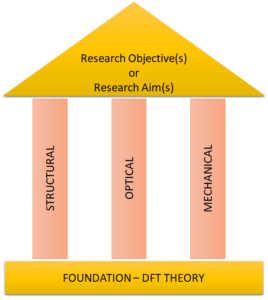I frequently come across cases whereby research steps are mistaken to be the objectives of the work. It would be easier if we make use example to illustrate the idea.
Let us say that you are doing computational research on a certain material using DFT. In order to propose the said material (let’s call it XYZ material) for a certain application, you will need to investigate various properties related to the application. There are structural, optical, mechanical properties etc that you will compare with previous calculations and / or experiments.
Therefore the objective(s) of the work can be rather simple for e.g.
To determine the suitability of XYZ material for application in [name of application e.g. solar cell] based on its structural and optical properties.
or simply
To determine the suitability of XYZ material for application in [name of application e.g. solar cell].
There may be some who thinks that this is too short. There are also people who thinks a MSc dissertation should have more than one objective. I will not argue on this since opinion defers from one person to another, what more between one field to the other. If you want, you can expand on this accordingly.
However, one thing is for sure. The research objectives are not going to be:
-
Optimize parameters
-
Calculate structural property of XYZ
-
Calculate optical property of XYZ
Objective #1 above is obviously not suitable since this is part of computational work. It should NOT be included as an objective. Objective 2 and 3 looks natural but to me this is more of the steps that you need to take in order to investigate the suitability of XYZ material as compared to materials that are currently being used.
So if you are still wondering how many objectives should you have in your dissertation / thesis? I would say think of research objective(s) as the aim(s) of your work. It is perfectly fine to have only one objective. But in order to reach this aim, you have to consider many aspects.
These aspects that help you to reach your aim will be detailed out in your research methodology. Here, methodology is not to be mistaken as method. There are not the same!
Methodology is what helps you to go from where you are (before you start your research) to where you want to be (the aim of your research).
Here is a simple sketch to illustrate the distinction between research objective(s) and research steps – at least in my humble opinion.





